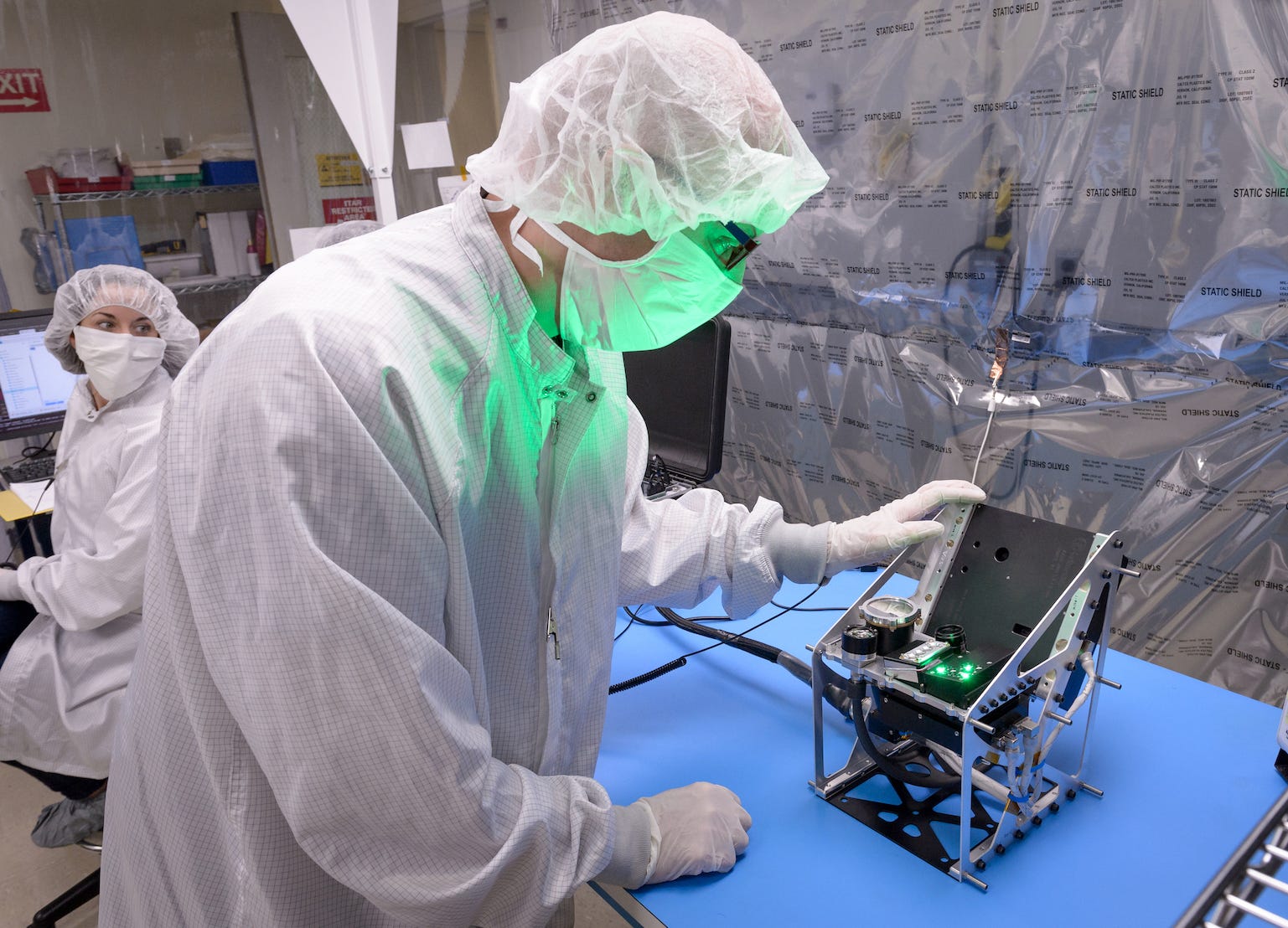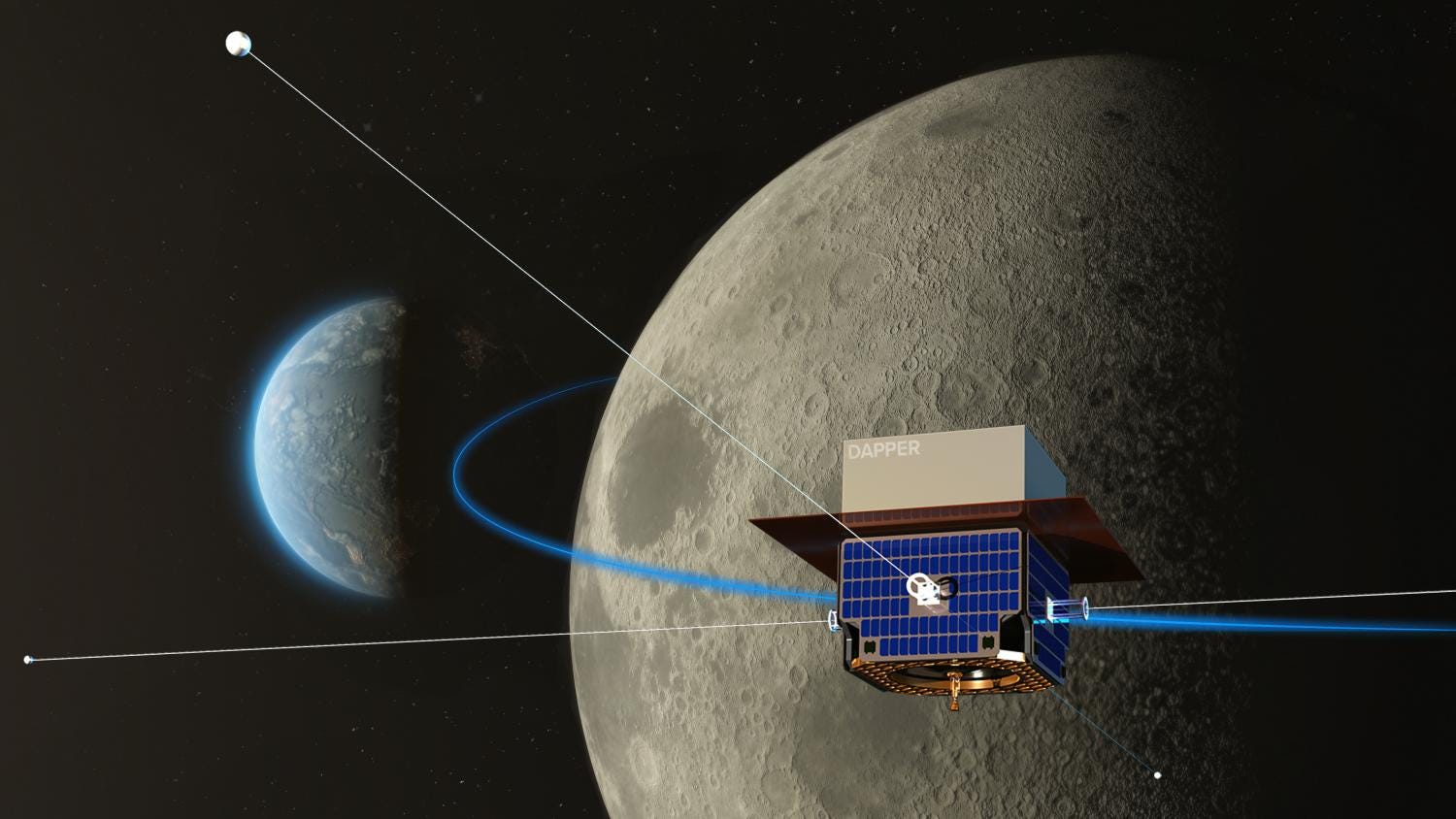Moon Monday Issue #10
NASA's SLS rocket fails critical test, Astrobotic readies water-detecting NASA instruments for their first Moon landing, Japan to collaborate on Gateway, and more developments in the lunar space.
Highlight

NASA’s multi-billion dollar SLS rocket that has been about a decade in the making with multiple cost overruns has failed its most awaited test. On January 16, NASA successfully hot fired all four engines on the rocket’s core stage, but the onboard computer shut them down at about 67 seconds into the test. The test was supposed to run for eight minutes to simulate phases of its flight, including engines firing at different power levels and their gimbaling. From Eric Berger’s excellent report on the matter:
About 50 seconds into what was supposed to be an 8-minute test firing, the flight control center called out, “We did get an MCF on Engine 4.” This means there was a “major component failure” with the fourth engine on the vehicle. […]
Honeycutt (SLS’ program manager) said the engine problem cropped up about 60 seconds into the test, at one of its most dynamic moments. This was when the engines were throttling down from 109 percent of nominal thrust to 95 percent, Honeycutt said. And it is also when they began to gimbal, or move their axis of thrust. At approximately 60 seconds, engineers noted a "flash" in the area of a thermal protection blanket around Engine 4, Honeycutt said.
NASA said the teams are assessing the data, and will inspect the core stage and the engines to then determine if another hot fire is needed, and if it’ll affect the November 2021 launch target for its first mission, Artemis I. Given the constant delays of key milestones for the rocket, a launch slip to 2022 seems likely.
Meanwhile, the Orion spacecraft to be used on Artemis I has completed its assembly and testing, and is being moved to NASA’s Kennedy Space Center in Florida, where the spacecraft will be fueled for its mission around the Moon.
Exploration
NASA and Astrobotic successfully tested power, data, and software interfaces between the agency’s three instruments and a simulated version of Astrobotic’s lunar lander. These instruments––comprising a neutron spectrometer, a mass spectrometer and an infrared one––launching in late 2021 on Astrobotic’s first lunar lander as part of NASA’s CLPS program are a precursor to a similar instrument set launching on the agency’s VIPER rover in 2023 to study water ice on the Moon’s poles. The instruments will detect water on the lunar surface blasted by the lander's propulsion system, and track how they move across the lunar surface. This is key to understanding the Moon’s water cycle and how water gets trapped in permanently shadowed regions on the poles.

Intuitive Machines announced that just like their first lunar landing mission, their second one, IM-2, will launch on a SpaceX Falcon 9 rocket as well. NASA has selected the IM-2 mission to deliver the Polar Resources Ice Mining Experiment (PRIME-1) drill and a mass spectrometer pair to the Moon by December 2022, both a precursor to the TRIDENT drill and MSOLO mass spectrometer flying on VIPER.
NASA and JAXA have finalized an agreement for the NASA-led Gateway lunar orbiting station, which will see Japan provide life support systems to the station’s International Habitation module (I-Hab), including additional space for the crew to live, work, and conduct research. JAXA will also provide batteries, thermal control systems, and imagery components for the module. These capabilities will reduce the Gateway’s logistical supply demands and allow it to host longer crewed and uncrewed operations. Japan also will provide batteries for the Gateway’s Habitation and Logistics Outpost (HALO), the initial crew module for visitors to the Gateway. The agreement also marks NASA’s intent to provide crew opportunities for Japanese astronauts to the Gateway.
The team from Michigan Technological University won NASA’s BIG Idea 2020 challenge to propose a novel-yet-realizable payload onboard a future CLPS lander to explore permanently shadowed regions on the Moon’s poles. The team’s idea is to explore the shadowed regions efficiently through the use of super conducting cables that can deliver large quantities of power from a sunlit lander outside the region (paper). Browse the other contending concepts, and enter the 2021 challenge on ideas NASA wants to mitigate hazardous Moon dust.
Science
A nice article on payloads related to radio astronomy that will be onboard lunar missions in this decade, aiming to demonstrate and work towards large scale radio astronomy from the Moon. The first of these lot is NASA’s ROLSES instrument launching on Intuitive Machine’s first Moon landing mission in late 2021. It will characterize radio frequencies from the lunar soil so that future radio telescopes can account for its interference.

Evidence mounts that large (kilometer-sized) bodies haven’t been impacting the Moon at a consistent rate in the past three billion years, as has been assumed for a long time and used to age date features across the solar system. By studying small-sized superposed craters on the floors of craters larger than 50 kilometers wide, scientists found that large bodies impacted the Moon at an increased rate about 2 billion years ago, and then at a lower rate about a billion years ago.
Scientists have used data from NASA’s LRO, China’s Chang’e 2 and Chang’e 4 missions respectively to thoroughly map craters at multiple scales in the Chang’e 4 landing area for the first time. This work will be useful to more accurately date the Chang’e 4 landing region, and to understand crater evolution on the Moon’s farside.
More Moon
A nice article, “Who keeps track of all the craters on the Moon?”, which honors the role of amateur astronomer Mary Blagg in standardizing names of features on the Moon, and highlights work of other women in planetary cartography.
I interviewed Chandrayaan 1’s Mission Director a few months ago about his role in the mission that discovered water on the Moon, and how ISRO’s partnership with the U.S. came about for the same.
Moon Monday crossed 300 subscribers! 🚀
I’m publishing this one-of-its-kind Moon exploration newsletter every week for free. Moon Monday has no ads either and it will stay that way. If you like my work, please consider supporting me. I accept both monthly and one-time donations. Monthly supporters will get their names credited at the end of Moon Monday issues along with a link to their website/social, with increasing number of mentions for higher tier supporters.
